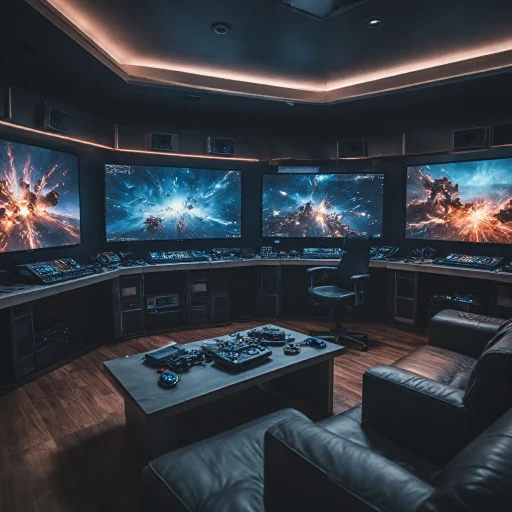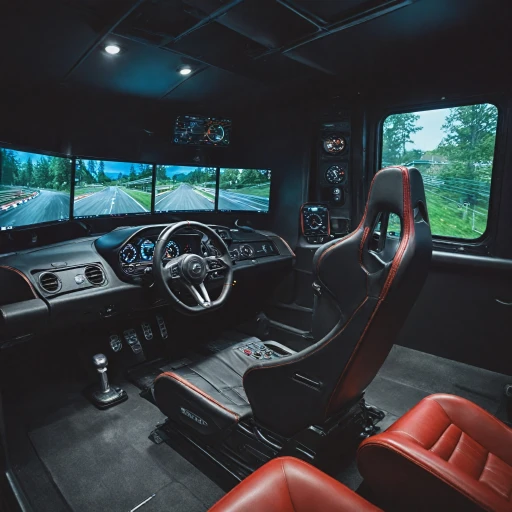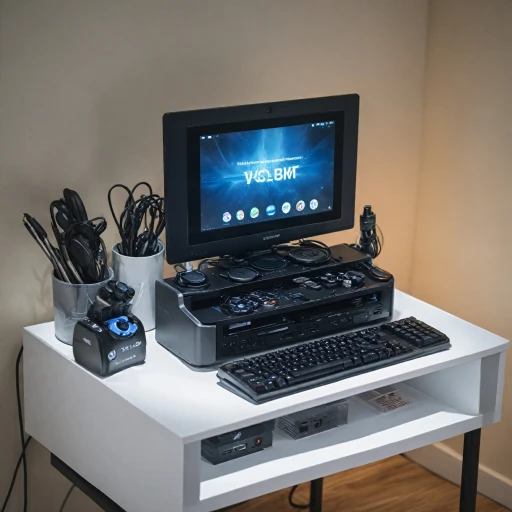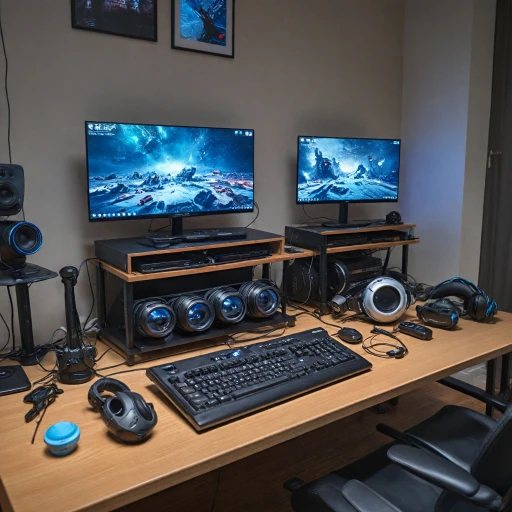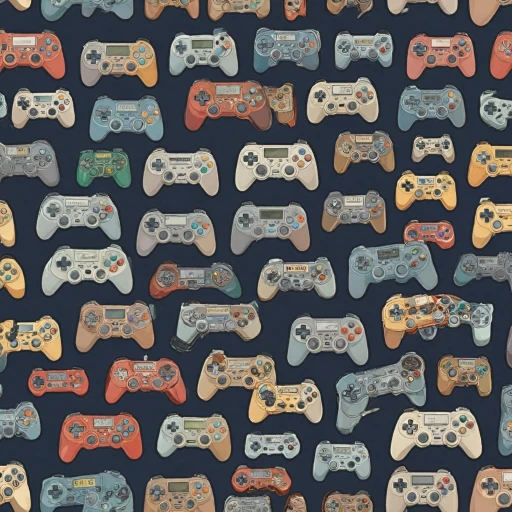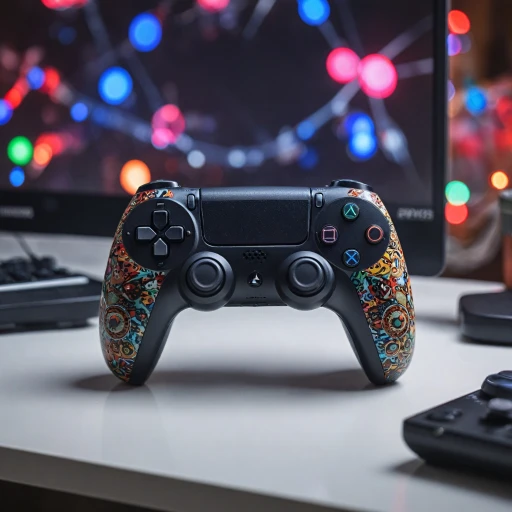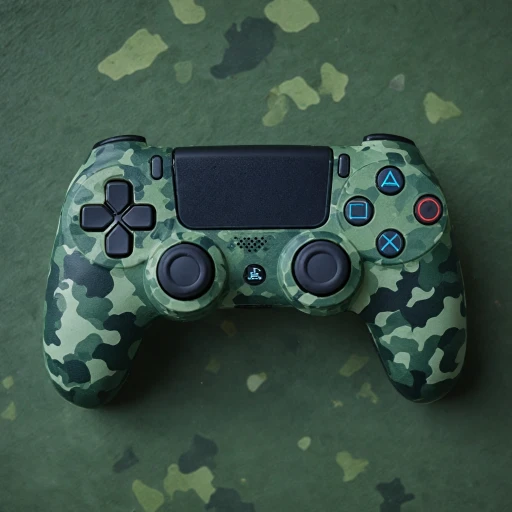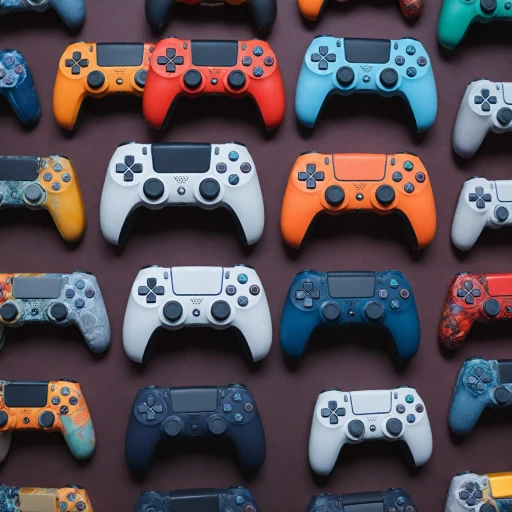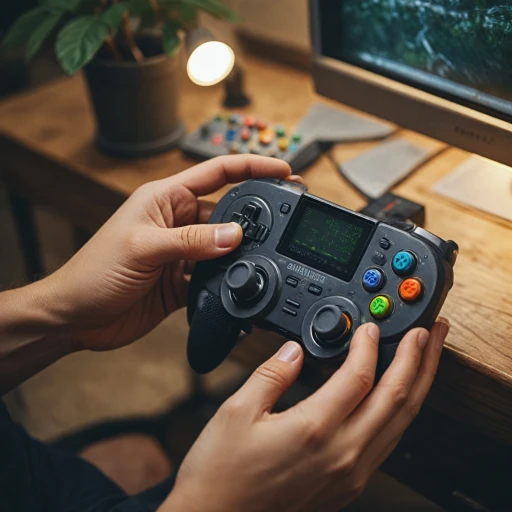
Understanding 3-DOF Joysticks
Exploring the Mechanics of 3-DOF Joysticks
In the realm of gaming, controllers have continuously evolved to provide a more immersive experience for players. A significant addition to this evolution is the 3-DOF joystick. The term "3-DOF" stands for three degrees of freedom, which are represented by the motions: pitch, roll, and yaw. These axes allow a joystick to move in three-dimensional space and offer greater control over gaming experiences, especially in applications like flight simulators, racing games, or virtual reality environments. 3-DOF controllers distinguish themselves by allowing an input device to track rotational motion around the three perpendicular axes. This includes tilting forward and backward (pitch), side to side (roll), and rotating left and right (yaw). With such motion control, players can engage with games on a deeper level, blurring the lines between virtual and reality. These devices are lauded for their precise motion input, making them invaluable in motion simulators where realistic control is vital. The cutting-edge technology behind 3-DOF joysticks is meticulously designed to deliver both accuracy and ergonomic ease, ensuring that gamers can enjoy extended sessions without discomfort. This design aspect is crucial for maintaining prolonged immersion in games. Many gamers have praised 3-DOF joysticks in customer reviews for their ability to deliver an authentic experience. Moreover, popular virtual reality systems like HTC Vive and Meta Quest have embraced these controllers to enhance user interfaces. For enthusiasts interested in integrating such joysticks into their setups, many devices offer plug-and-play compatibility with various gaming consoles and PCs. Unity projects have also adopted the use of these controllers, appreciating their fluidity and expansive control within virtual environments. As the gaming industry strides forward, the role of 3-DOF joysticks will undoubtedly expand, offering more degrees of freedom. To delve more into how these controllers came to be, you can explore the evolution of video game controllers to see how the landscape has shifted over time.The Evolution of Gaming Controllers
The Shift in Gaming Controllers: A Journey from Simplicity to Complexity
The world of gaming has seen a remarkable evolution in its input devices, with controllers adapting to the rising demands of modern gamers. From simple button-dominated interfaces to highly sensitive, multi-axis devices, the journey has been intriguing. As technology advanced, so did the precision and the degree of freedom (DOF) offered by controllers, enhancing both the gaming reality and player engagement.
Decoding Controllers: From One-Dimensional to 3-DOF
Initially, controllers focused primarily on basic input tasks, moving along a single axis. However, as gaming environments evolved into complex virtual realms, so did the input devices. The transformation from basic controllers to dof controllers, such as the cutting-edge 3-DOF joystick, indicates a preference for motion simulators that promise a more immersive experience by incorporating pitch, yaw, and roll.
Enhanced Motion Control: Embracing Freedom in Gaming
The shift toward multi-DOF input devices has been gradual yet steady. Modern controllers like the meta quest and htc vive emphasize movement in three degrees of freedom, introducing a more profound interaction between the player and game environment. This evolution enables precise motion control which mimics actions such as forward-backward and pitch-roll movements, creating a realistic gaming experience that truly transcends traditional gameplay.
Applications and Customer Reception
The impact of these advanced input devices extends beyond gaming. Their applications in industries like virtual reality have been profound, especially in unity projects that aim to create seamless virtual realities. Customer reviews often highlight the ergonomic design and plug and play convenience of these controllers, appreciating the seamless user experience they bring to both casual and pro players.
For those seeking to enhance their gaming experiences, exploring the top custom controllers could offer insightful perspectives on how traditional controllers have adapted to these advancements.
Benefits of 3-DOF Joysticks in Gaming
The Advantages of Integrating a Three-Degree Freedom Joystick
The integration of a three-degree freedom (3-DOF) joystick into gaming setups holds considerable promise for an immersive gaming experience. This advanced input device leverages the ability to accommodate pitch, roll, and yaw movements, offering gamers enhanced control in a virtual reality environment. This is particularly impactful in motion simulators and virtual reality (VR) applications, which benefit from the joystick's intuitive control system. A 3-DOF joystick distinguishes itself from traditional controllers through its versatility and freedom of motion. By operating on three axes, these joysticks allow for precise adjustments in various directions, including forward-backward and side-to-side movements. This nuanced control mechanism ensures that players can navigate virtual worlds with a realistic sense of motion and immersion. An important aspect of 3-DOF joystick integration in gaming is its compatibility with cutting-edge technologies. Devices like the HTC Vive and Meta Quest can utilize these joysticks, enhancing the user experience with plug-and-play support. These joysticks streamline communication between the player and the console, acting as a seamless extension of the player’s actions in virtual environments. Moreover, the ergonomic design of a 3-DOF joystick contributes to prolonged gaming sessions without causing discomfort. Gamers have praised the joystick's comfortable grip and responsive feedback, as evidenced by numerous customer reviews. The freedom of movement provided by these devices ensures that gamers of all skill levels can enjoy a more engaging and fluid gaming experience. The application of 3-DOF joysticks spans beyond traditional gaming consoles, making them a viable option for integration into diverse platforms such as motion simulators and other virtual applications. As the gaming industry continues to evolve, the demand for innovative control solutions like the 3-DOF joystick is expected to grow, offering gamers an unprecedented level of control and immersion. In summary, the implementation of 3-DOF joysticks in gaming consoles represents a significant leap forward in gaming technology. With the ability to simulate real-world movement in virtual spaces, these joysticks are likely to become a staple in the future of gaming. For those looking to enhance their gaming experience, visiting enhance your gaming experience offers further insights into optimizing gaming hardware.Challenges in Implementing 3-DOF Joysticks
Technical Hurdles in Adopting 3-DOF Joysticks
While the potential of 3-DOF joysticks in gaming consoles is immense, there are several challenges that developers and manufacturers face. One of the primary issues is the complexity involved in integrating these devices into existing gaming systems. The three degrees of freedom—pitch, roll, and yaw—require advanced motion sensors and motors to accurately capture and translate player movements into the virtual environment.
Compatibility and Device Support
Ensuring compatibility with a wide range of consoles and games is another significant challenge. Many current systems are designed with traditional controllers in mind, and adapting them to support a DOF joystick can be a daunting task. This often involves not only hardware adjustments but also software updates to ensure seamless plug-and-play functionality. Developers must also consider the ergonomic design of these controllers to ensure comfort during extended gaming sessions.
Cost and Consumer Adoption
The cost of producing and purchasing 3-DOF joysticks can be prohibitive for both manufacturers and consumers. Advanced technology like motion simulators and precise input devices often come with a higher price tag, which can deter potential buyers. Additionally, customer reviews indicate that while some players appreciate the enhanced control and realism, others find the transition from traditional controllers to be challenging.
Integration with Virtual Reality Platforms
Another challenge lies in the integration of 3-DOF joysticks with virtual reality platforms such as HTC Vive and Meta Quest. These platforms demand precise motion control and input accuracy, which can be difficult to achieve with current technology. Developers working on Unity projects, for instance, must ensure that the DOF controller is compatible with their applications, providing a smooth and immersive experience.
Despite these challenges, the potential for 3-DOF joysticks to revolutionize gaming remains strong. As technology advances and more resources are dedicated to overcoming these hurdles, we may see a new era of gaming where players enjoy unprecedented freedom and control.
Comparing 3-DOF Joysticks with Traditional Controllers
Traditional Controllers vs. 3-DOF Joysticks: A Comparative Look
When it comes to gaming controllers, the traditional models have long been the standard. These controllers typically offer a limited range of motion, often restricted to two axes: forward-backward and left-right. In contrast, a 3-DOF joystick introduces an additional degree of freedom, allowing for pitch, roll, and yaw movements. This expanded range of motion can significantly enhance the gaming experience, especially in virtual reality applications.
Traditional controllers are often praised for their ergonomic design and ease of use. They are plug-and-play devices that have been refined over years of development. However, they may not fully capture the immersive potential of modern gaming environments, particularly in motion simulator games where a more dynamic input device is beneficial.
Advantages of 3-DOF Joysticks
3-DOF joysticks offer a cutting-edge approach to gaming control. With the ability to move along three axes, they provide a more realistic interaction with virtual environments. This is particularly advantageous in applications like flight simulators or racing games, where pitch, roll, and yaw are crucial for an authentic experience.
Moreover, the freedom of movement offered by a 3-DOF joystick can enhance the user's sense of presence in virtual reality. Devices like the HTC Vive and Meta Quest are already exploring these possibilities, integrating 3-DOF controllers to offer a more immersive experience.
Challenges and Considerations
Despite their advantages, 3-DOF joysticks are not without challenges. Customer reviews often highlight issues with device support and compatibility with existing gaming systems. Additionally, the learning curve for mastering a 3-DOF controller can be steep for some users, especially those accustomed to traditional controllers.
However, as more developers incorporate 3-DOF joysticks into their Unity projects and other gaming platforms, these challenges may diminish. The potential for a more engaging and realistic gaming experience makes the exploration of 3-DOF joysticks a worthwhile endeavor for both developers and gamers alike.

